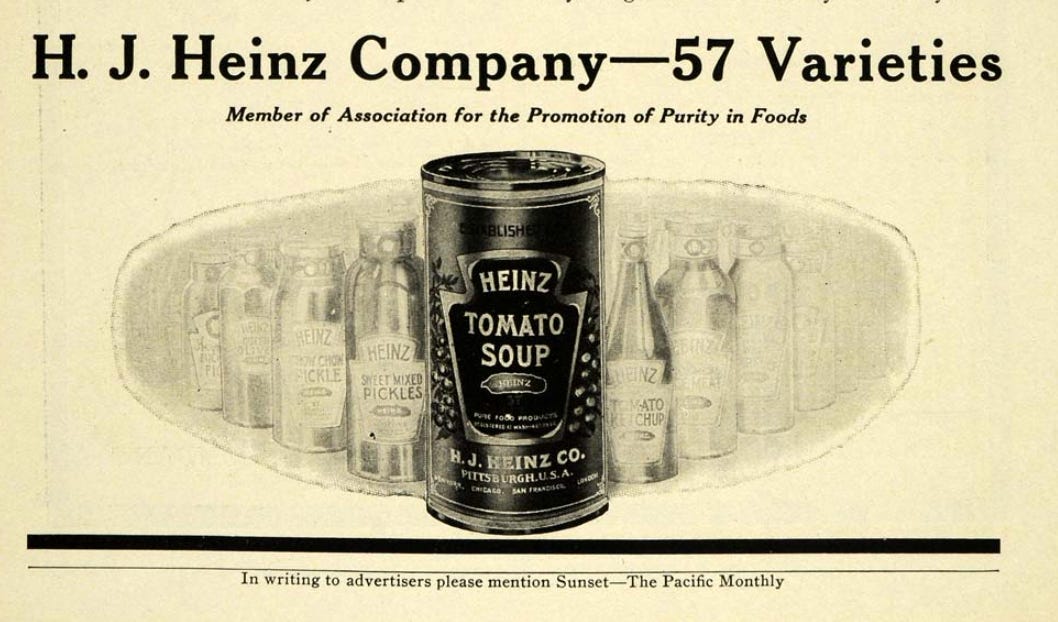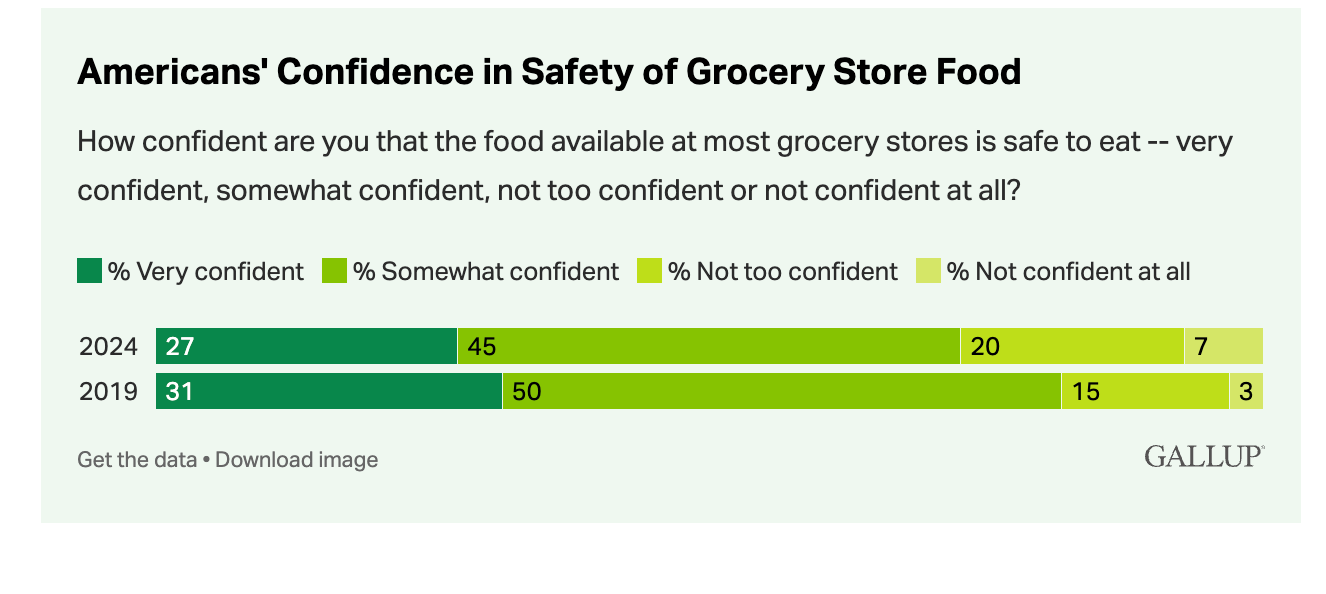Provoke- The Food Fraud Issue
From adulterated turmeric, fake beef, and plastic rice to novelists helping to change food laws
The Great-Lozenge Maker- Punch 1858
Brands Created as a Solve for Food Fraud
Some of the world’s most famous brands were created to provide trustworthy alternatives to the adulterated products that dominated many markets.
“With the newfound support of the medical press, they then created the slogan “Absolutely Pure. Therefore Best.” The timing worked out because in the 1860s, there was increasing attention to issues with manufactured food. Consumer guides pointed out the scams that existed at the time and how to test the quality of cocoa. For example, if there was animal fat in the cocoa, it might be slimy or taste cheesy and if there was starch added, the cocoa would thicken in hot water or milk. They put full-page ads into newspapers, they put up posters, and they even had their ads on horse-drawn buses in London. In 1868, people began to know the Cadbury name,”
Food Non-Fiction
“Part of the appeal of the Quaker Oats — which came packaged in a cardboard box, a relatively new technology itself — was that they'd be free from the contamination of the cereal typically purchased from bulk bins at the grocers. (The classic cardboard cylinder was introduced in 1915.) Indeed the Quaker was sometimes depicted holding a scroll that read "pure." But as Abigail Carroll argues in her history of American eating, the box wasn't simply practical; it was promotional. "Both the container and the image it bore set Crowell’s product apart, making it recognizable and trustworthy, and the public responded.”
2nd Breakfast
“By age 12, Heinz had his own plot, a horse-drawn cart, and a growing list of customers. In addition to vegetables, he began to sell a grated horseradish product based on his mother's recipe. Most producers sold prepared horseradish in dark jars because, as a business writer of the day noted, "the dealers had adulterated it to so great an extent by adding turnip and wood fibers as filler." To set his horseradish apart and attract those naturally suspicious of food they couldn't see, Heinz bottled his in clear glass and offered samples. "A wide market awaited the manufacturer of food products who set purity and quality above everything else in their preparation," Heinz wrote.”
CNN
Food Adulteration in The Victorian Era
40 Years to Get to Powerful Food Laws
“Chemical additives weren't the only problems in the food of the 19th century. Weevils were common in grains and flour and sugar mites infested nearly every package of brown sugar sold. In spite of all the findings, the first Food Adulteration Protection Act was not passed until 1860; but it had few teeth and did little to change what was going on in the industry. 1872 saw a revised Act passed, 1875 saw another, but it wasn't until the Food Adulteration Act of 1899 passed that use of poisonous food additives started winding down in ernest. While there was no stopping the household cook from thickening the gravy with a pinch of plaster, the major food manufacturers were no longer killing their customers systematically and on purpose.”
The Cook’s Guide
“These new microchips are equipped with blockchain-backed tracking and real-time inventory control, offering a formidable defense against fraudsters. These micro-transponders, as small as a grain of sand, are fitted onto the cheese’s food-safe casein label. When scanned with a laser reader, it gives a unique serial ID that verifies the authenticity of the wheel.”
Culture Cheese Mag
“Constant was, in fact, passing off non-organic grain as organic grain. The scheme, in which at least half a dozen associates were involved, is the largest-known fraud in the history of American organic agriculture: prosecutors accused him of causing customers to spend at least a quarter of a billion dollars on products falsely labelled with organic seals.”
The New Yorker
American Food Fraud Task Force
“The task force will publish its findings through regular reports designed to empower consumers with actionable information. These reports will document specific instances of food fraud, identify responsible parties, and provide practical guidance for avoiding compromised products. AHA!'s expansion into anti-corruption work builds upon Vetter's experience building the country's leading organic salad dressing company and inventing clean manufacturing. This perspective has shaped the organization's uncompromising approach to industry accountability and transparency. The first investigative report is scheduled for release next month, focusing on widespread ingredient substitution practices and misleading "natural" claims within mainstream grocery products.”
News File Corp
“The cinnamon originated in Sri Lanka and was shipped to Ecuador, where it was ground into a powder. It was probably there, the F.D.A. has said, that the cinnamon was likely contaminated with lead chromate, a powder that is sometimes illegally used to tint or bulk up spices.”
The New York Times
“Chris Hiemstra, a third-generation beekeeper, is among honey producers who say they're feeling the sting from cheaper, adulterated imports. He knew he had to expand the family business if he wanted to keep his honey farm in Aylmer, Ont. "We're trying to support the family and selling honey wholesale by the barrel on the world market was really difficult and unsustainable," he said. "It was for survival." Hiemstra has spent 20 years building his farm, Clovermead, into a larger, agri-tourism adventure farm where locals and visitors pay to tour the property. Patrons take wagon rides, visit farm animals and learn about, taste and buy honey produced by the farm's 24 million bees.”
Is American Grocery Store Food Safe?
Olive Oil Price Surge- 2022-2023
“What we do with our random testing programme is we will immediately contact both the company that is listed as the distributor or the manufacturer on the label and contact the retailer with our test results. That’s a minimum. Then, depending on what the results show, how egregious it is, and how apparent that this was intentional, then we go to the FDA. In this case, we went to the FDA right away, so we went to the FDA and notified them of this problem. Several years ago, [we found] a particular issue wasn’t resolving itself and we ended up bringing a lawsuit against the company for false advertising and misrepresentation. In many cases, you really don’t know who the responsible party is. If it’s private label, it’s possible that the company that bought the oil from someone else has been cheated. You don’t necessarily know who’s to blame, so we were cautious about that.”
Just Food
Novelist Upton Sinclair and American Food Safety
“Believing Roosevelt wasn’t acting fast enough, Sinclair leaked the inspectors’ findings to the New York Times in late May. “Tell Sinclair to go home and let me run the country for a change!” a fuming Roosevelt directed Doubleday, Page & Company. The investigators’ discoveries further sickened the public and eroded the opposition to a meat safety bill by powerful congressmen such as House Speaker Joseph Cannon. As meat sales dropped in the United States, the impact of The Jungle, which was translated into 17 languages within months of its publication, spread around the world. Germany and France banned American meat products, and British imports of American canned meat ceased. After releasing an eight-page summary of the Neill-Reynolds investigation in early June, Roosevelt threatened to make the entire report public if Congress did not put a meat inspection bill on his desk. “Roosevelt used the report as a bludgeon, and after these contracts started disappearing, packers went back to Congress and agreed to the Meat Inspection Act,” Blum says.”
History.com
“Samples of UK honeys spiked with rice and sugar beet syrups were tested using the non-invasive Spatial Offset Raman Spectroscopy (SORS) method - developed originally at STFC’s Central Laser Facility (CLF) - more commonly used in pharmaceutical and security diagnostics. This proved highly accurate in detecting sugar syrups present in the honey. SORS rapidly identified the ‘fingerprint’ of each ingredient in the product, and the scientists combined this technique with machine learning to successfully detect and identify sugar syrups from various plant sources. The analysis method is portable and easy to implement, making it an ideal screening tool for testing honey along the supply chain.”
Cranfield University
French Luxury Food Brand Fined
“The famous Baillardran house, known for its high-end canelés, was sentenced on Thursday, January 16, to a fine of 100,000 euros by the Bordeaux correctional court for misleading business practices. The investigation, conducted in 2023, revealed that the crown jewel of Bordeaux canelé presented its products as “fresh” when they were sometimes frozen and thawed, and used industrial flavors and white rum instead of the prestigious ingredients advertised on their labels, such as Madagascar vanilla, butter, or amber rum, which were actually missing.”
Le Bonbon
“Forsyth and her colleagues set out to talk to turmeric farmers – including a man in his 70s. His ancestors were turmeric farmers and he'd been harvesting the root all his life. He knew the processing steps intimately – from the boiling and drying of the root to polishing off the outer layer and then eventually grinding, all to make a brilliantly yellow powdered spice. "I remember we were sitting in the car – there was monsoon rain, splashing outside – and that's when the person said, 'Yeah, back in the 1980s, there was a huge flood,' " Forsyth remembers. With so much rain, the farmer told her, turmeric roots wouldn't dry properly in the sun. Instead of turning their usual bright yellow, the roots became black-ish. The farmers were desperate to restore the color so they could sell their crop. They went in search of a solution. "They found the cheapest yellow pigment available at that time," Forsyth says. The vibrant yellow pigment was lead chromate. It's often used in industrial paints – think of the yellow of construction vehicles.”
NPR
Misc
Seattle Study Finds Grocers Better than Sushi Restaurants at Labelling Salmon
China’s Fake Beef and Plastic Rice
A Device to Detect Food Fraud at the Point of Sampling
UK Warns of Fraudulent Lab Test Results in the Supply Chain
Research Finds 33% of Restaurants in Lafayette, Louisiana Serve Foreign Shrimp











